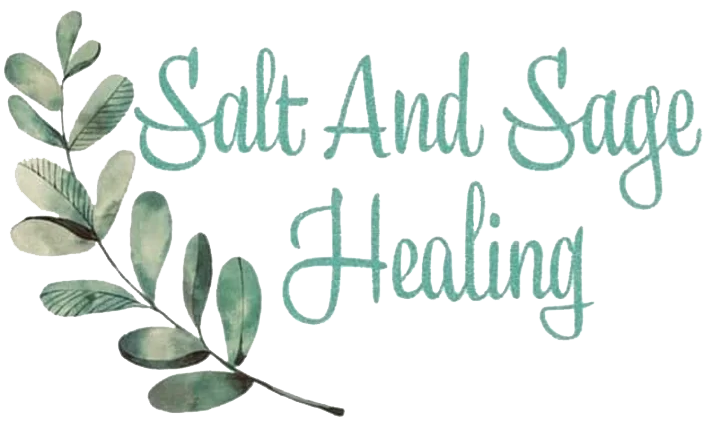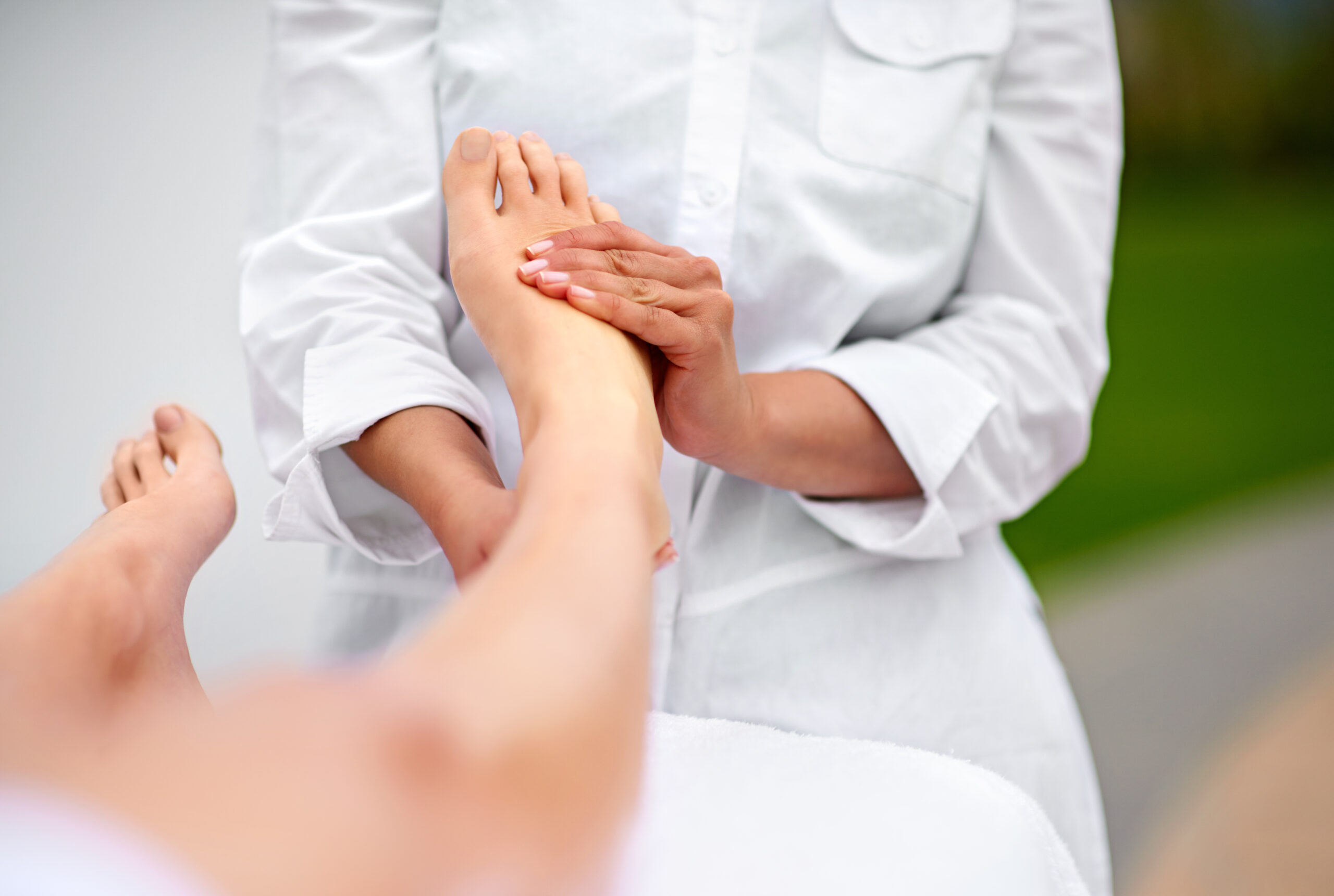What Is Reflexology: Benefits, Techniques, and Misconceptions
At Salt and Sage Healing, our experienced therapists are trained in reflexology and committed to providing high-quality care to help you feel your best.
Reflexology is a type of therapy that helps balance your body and promote healing by working on specific points on your feet, hands, or ears. People often think reflexology is just like a foot massage, but it is actually quite different.
Reflexology has roots in ancient healing traditions and is becoming more popular today. In this article, we will explain what reflexology is, how it works, what benefits it can have, and clear up some common misunderstandings.
What is Reflexology?
Reflexology is a type of therapy that focuses on certain spots on the feet, hands, or ears that are believed to be connected to different parts of the body, like organs and glands. When these spots, called reflex points, are pressed, they can help the connected parts of the body feel better. Reflexologists use pressure, stretching, and movement to activate these points and help with overall health and stress relief.
Unlike a regular massage, which works on muscles and soft tissues, reflexology focuses on specific points to help the whole body feel better. It goes beyond just helping you relax—reflexology can help your body heal by focusing on areas linked to the nervous system.
How Does Reflexology Work?
How Reflexology Helps the Body
Reflexology works by pressing on reflex points, which are thought to help different parts of the body heal and feel better. Reflexologists use gentle pressure on these points to help you relax, reduce stress, and feel healthier overall. Although scientists are still learning how reflexology works, some people believe it can:
- Activate the Nervous System: Reflexology might help the nervous system work better, improving communication between different parts of the body.
- Improve Circulation: Reflexology may help blood flow more easily, bringing oxygen and nutrients to cells and removing waste.
- Release Tension and Stress: Regular reflexology sessions can help you relax deeply, reducing stress, which is a major cause of health problems.
- Support Natural Healing: Reflexology helps the body restore its own balance, which may assist in natural healing.
It’s important to understand that reflexology is best used along with other medical treatments rather than by itself. The idea that energy pathways can be influenced by reflexology is still not fully proven by science.
Key Reflex Points: Understanding the Focus of Reflexology
Foot Reflexology: How It Works
The feet are the main focus in reflexology. Different parts of the feet are believed to be connected to different parts of the body. For example, the tips of your toes are linked to your head, while the arch of your foot is connected to your stomach.
By working on specific points on the feet, foot reflexology can help with issues all over the body, like headaches or stomach problems. Many people find foot reflexology very relaxing and helpful for their overall health.
Hand Reflexology: Benefits
Reflexology can also be done on the hands. Just like the feet, the hands have points that connect to different parts of the body. Hand reflexology is often used when working on the feet isn’t possible and can provide similar benefits, like helping you relax and reducing tension.
Ear Reflexology: Does It Work?
Some reflexologists also work on points in the ears to help with relaxation and healing. Ear reflexology is less common but can still be helpful for balance and certain health issues by applying pressure to specific spots on the ears.
A Brief History of Reflexology
Reflexology has roots in ancient Egypt, China, and other cultures. Ancient Egyptians are known for early forms of reflexology, as shown in tomb artwork from around 2330 BCE. In China, similar techniques were used to help balance the body’s energy, called Qi (life force energy).
Modern reflexology began in the early 1900s when an American physiotherapist named Eunice Ingham created what is now called the “Ingham Method” of reflexology. She made a map of reflex points on the feet that linked different areas to organs and glands. This method is still used today.
Benefits of Reflexology: What Does Science Say?
Stress Reduction
Reflexology can help you relax and feel less stressed, which is really helpful for people who deal with anxiety or high stress. Reflexology may help calm the nervous system, lower stress hormones, and make you feel more relaxed.
Pain Management
Reflexology has shown promise in helping with pain from conditions like migraines, arthritis, and back pain. By working on pressure points, reflexology might help reduce how much pain you feel. However, it’s important to remember that reflexology should not replace regular medical care.
Improved Circulation
Some studies suggest that reflexology can improve blood flow, which helps the body get rid of waste and deliver oxygen and nutrients more effectively. Better circulation can also help your organs work better and promote faster healing.
Better Sleep
If you have trouble sleeping, reflexology might help you sleep better by making you feel relaxed and reducing anxiety. A calm mind and body can lead to better sleep patterns and improved rest.
Supporting Cancer Treatment
Reflexology is often used as a complementary therapy for cancer patients to help manage symptoms like nausea, fatigue, and anxiety. Although reflexology is not a treatment for cancer, it can help improve quality of life for people undergoing conventional treatments.
Reflexology vs. Foot Massage: What’s the Difference?
A lot of people think reflexology is just a type of foot massage, but they are different:
- Purpose: A foot massage focuses on muscles, tendons, and tissues in the foot to help you relax and relieve foot pain. Reflexology, on the other hand, uses pressure points to help other parts of the body.
- Technique: Reflexologists press on specific points based on a reflex map, while massage therapists use general strokes and kneading on the foot.
- Scope: Reflexology can also be done on the hands and ears, while foot massage is only for the feet and lower legs.
Common Misconceptions About Reflexology
Reflexology Cures Diseases
Reflexology is not a cure for any disease. It is meant to support your overall health and help manage symptoms, but it should never replace medical treatment.
Only Feet Are Involved
Reflexology can also be done on the hands and ears. This is helpful for people who have sensitive feet or other reasons why foot reflexology isn’t possible.
Anyone Can Do Reflexology
Reflexology requires special training to make sure pressure is applied correctly to reflex points. Reflexologists need to understand how the body is connected through these points, and they take classes to learn the right techniques.
What to Expect During a Reflexology Session
A reflexology session usually lasts between 30 and 60 minutes. It starts with a short talk about any health issues you have. During the session, you stay fully clothed, and only your feet, hands, or ears will be uncovered. The reflexologist will press on reflex points, often using a technique called thumb-walking. Many people feel very relaxed and may even fall asleep during the session.
Is Reflexology Right for You?
Reflexology is generally safe for most people, but you should check with your doctor if you have any health problems, like broken bones, infections, or blood clots. Reflexology is a good option if you are looking for a gentle, non-invasive way to help improve your health, but it is most effective when used alongside medical care.
Final Thoughts on Reflexology
Reflexology is a special type of therapy that uses pressure points on your feet, hands, or ears to help balance your body and promote healing. While more research is needed to fully understand how reflexology works, many people find it helpful for reducing stress, managing pain, and improving overall well-being. Whether you want to relax, manage pain, or improve your health, reflexology might be a great addition to your wellness routine.
Why Choose Salt and Sage Healing?
At Salt and Sage Healing, our skilled therapists are trained and experienced in providing high-quality reflexology treatments. We are dedicated to helping you improve your health and well-being with personalized care and attention. Our relaxing environment and caring approach make each session a comforting and positive experience.
Book Your Reflexology Session Today
Ready to see how reflexology can help you? Book your session with Salt and Sage Healing and take the first step toward a healthier, more balanced you.

